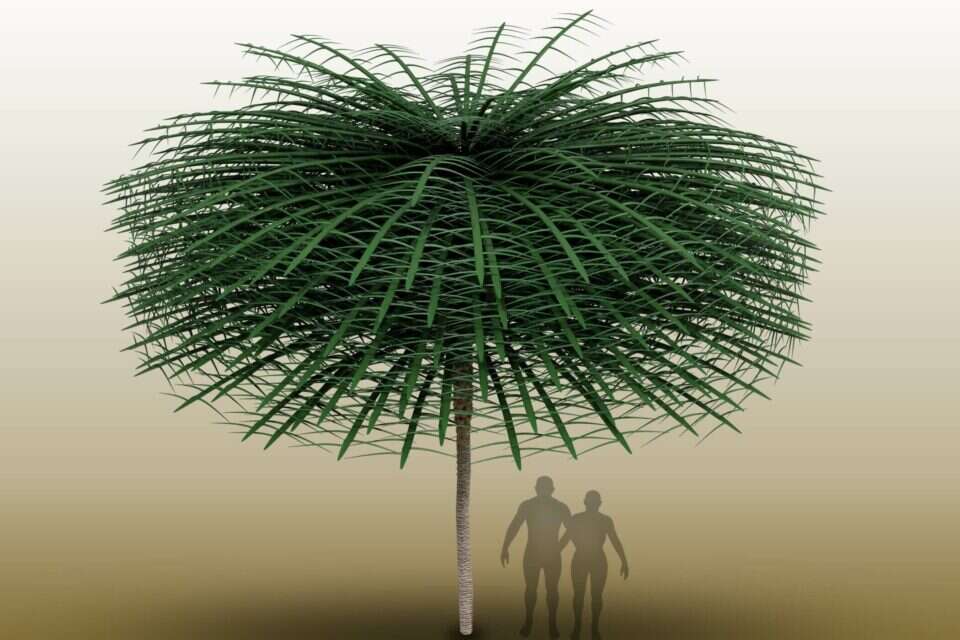Scientists have uncovered exceptionally preserved 350-million-year-old fossils of ancient trees similar to Crimson Callistemon (an Australian tree known as "bottlebrush", after the shape of its branches) with a completely unique spiral leaf arrangement, not seen in the modern world.
We enlisted the help of Claude to learn about this ancient and special tree.
Several nearly identical specimens of the new Sanfordiacaulis trees have been found in Canada.
Unlike typical fossilized tree trunks, these impressions, preserved in a lake of mud following an earthquake that toppled the trees, clearly show the trees' leaves—over 250 long leaves, tightly wrapped around the top few feet of the trunk.
Researchers estimate that the narrow trunks, less than 20 cm wide, supported enormous tops of leaves, which stretched to a diameter of over 5 meters.
The author of the study, Dr. Robert Gastaldo, compares the strange shape to the creation of Dr. Seuss, which is more reminiscent of a fern or a palm tree.
However, the density and height of the foliage of Sanfordiacolis exceeds that of any similar modern species.
The researchers believe that the formation of the upward spiral helped maximize the leaves' exposure to light, marking an early version of a forest canopy.
Gastaldo points out that the fossils illustrate how the plant life of the period was more diverse than expected.
Sanfordiacoulis seems to have been an experimental species in a form that seemed almost adapted to its ancient habitat, one that just barely missed the process of natural selection.
Were we wrong?
We will fix it!
If you found an error in the article, we would appreciate it if you shared it with us

